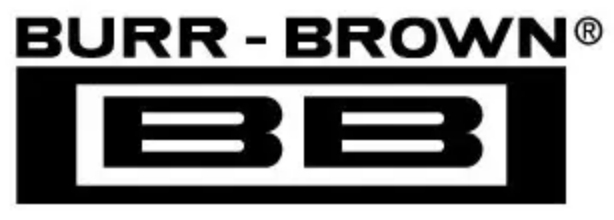As shown in Figure 3, the transformer’s center tap is con-
nected to ground. This forces the voltage swing on I
OUT
and
I
OUT
to be centered at 0V. In this case the two resistors, R
S
,
may be replaced with one, R
DIFF
, or omitted altogether. This
approach should only be used if all components are close to
each other, and if the VSWR is not important. A complete
power transfer from the DAC output to the load can be
realized, but the output compliance range should be ob-
served. Alternatively, if the center tap is not connected, the
signal swing will be centered at R
S
• I
OUTFS
/2. However, in
this case, the two resistors, R
S
, must be used to enable the
necessary dc-current flow for both outputs.
The OPA680 is configured for a gain of two. Therefore,
operating the DAC900 with a 20mA full-scale output will
produce a voltage output of
±1V.
This requires the amplifier
to operate off of a dual power supply (±5V). The tolerance
of the resistors typically sets the limit for the achievable
common-mode rejection. An improvement can be obtained
by fine tuning resistor R
4
.
This configuration typically delivers a lower level of ac
performance than the previously discussed transformer solu-
tion because the amplifier introduces another source of
distortion. Suitable amplifiers should be selected based on
their slew-rate, harmonic distortion, and output swing capa-
bilities. High-speed amplifiers like the OPA680 or OPA687
may be considered. The ac performance of this circuit may
be improved by adding a small capacitor, C
DIFF
, between the
outputs I
OUT
and I
OUT
, as shown in Figure 4. This will intro-
duce a real pole to create a low-pass filter in order to slew-
limit the DACs fast output signal steps, which otherwise
could drive the amplifier into slew-limitations or into an
overload condition; both would cause excessive distortion.
The difference amplifier can easily be modified to add a
level shift for applications requiring the single-ended output
voltage to be unipolar, i.e., swing between 0V and +2V.
DUAL TRANSIMPEDANCE OUTPUT CONFIGURATION
I
OUT
DAC900
Optional
R
DIFF
I
OUT
R
S
50Ω
R
S
50Ω
ADT1-1WT
(Mini-Circuits)
1:1
R
L
FIGURE 3. Differential Output Configuration Using an RF
Transformer.
DIFFERENTIAL CONFIGURATION USING AN OP AMP
If the application requires a dc-coupled output, a difference
amplifier may be considered, as shown in Figure 4. Four
external resistors are needed to configure the voltage-feed-
back op amp OPA680 as a difference amplifier performing
the differential to single-ended conversion. Under the shown
configuration, the DAC900 generates a differential output
signal of 0.5Vp-p at the load resistors, R
L
. The resistor
values shown were selected to result in a symmetric 25Ω
loading for each of the current outputs since the input
impedance of the difference amplifier is in parallel to resis-
tors R
L
, and should be considered.
R
2
402Ω
R
1
200Ω
I
OUT
DAC900
I
OUT
C
DIFF
R
3
200Ω
R
L
28.7Ω
OPA680
V
OUT
The circuit example of Figure 5 shows the signal output
currents connected into the summing junction of the
OPA2680, which is set up as a transimpedance stage, or
‘I to V converter’. With this circuit, the DAC’s output will
be kept at a virtual ground, minimizing the effects of output
impedance variations, and resulting in the best dc linearity
(INL). However, as mentioned previously, the amplifier
may be driven into slew-rate limitations, and produce un-
wanted distortion. This may occur, especially, at high DAC
update rates.
+5V
50Ω
1/2
OPA2680
DAC900
R
F1
C
F1
–V
OUT
= I
OUT
• R
F
I
OUT
C
D1
R
F2
C
F2
I
OUT
–5V +5V
R
4
402Ω
C
D2
R
L
26.1Ω
1/2
OPA2680
50Ω
–V
OUT
= I
OUT
• R
F
FIGURE 4. Difference Amplifier Provides Differential to
Single-Ended Conversion and DC-Coupling.
–5V
FIGURE 5. Dual, Voltage-Feedback Amplifier OPA2680
Forms Differential Transimpedance Amplifier.
®
13
DAC900

 BURR-BROWN [ BURR-BROWN CORPORATION ]
BURR-BROWN [ BURR-BROWN CORPORATION ]